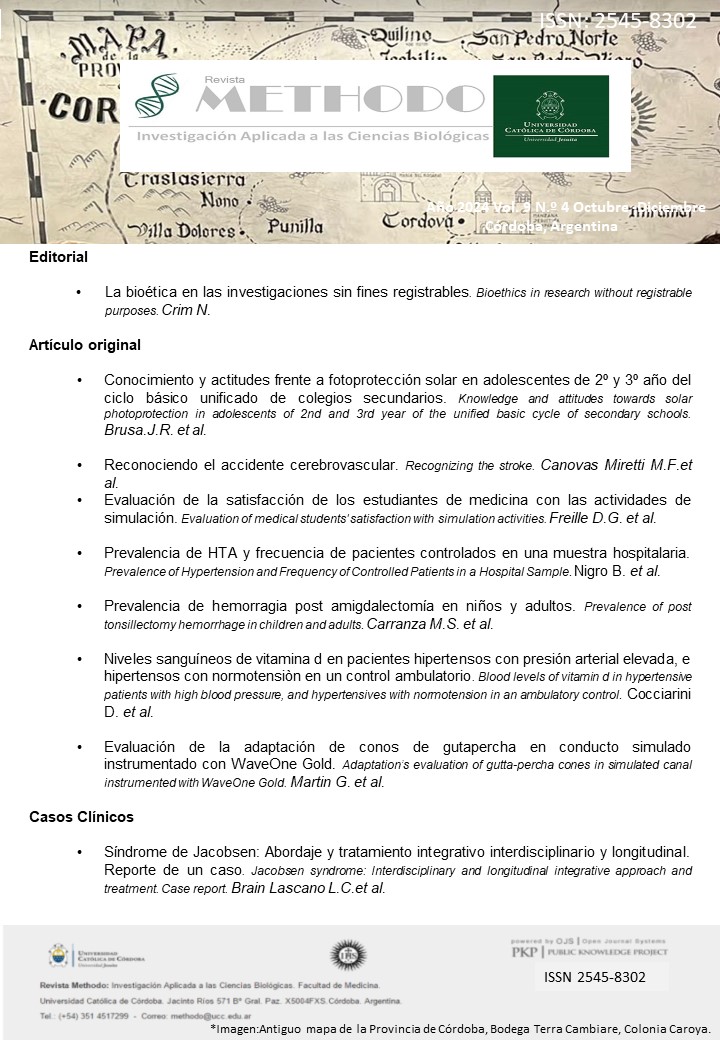Jacobsen syndrome: Interdisciplinary and longitudinal integrative approach and treatment. Case report
DOI:
https://doi.org/10.22529/me.2024.9(4)09Keywords:
Jacobsen syndrome, 11q deletion, thrombocytopeniaAbstract
INTRODUCTION: Jacobsen syndrome (11q deletion) is a rare genetic condition with an estimated prevalence of 1:100,000 births, female/male ratio of 2:1. It is characterized as a clinical disorder caused by segmental aneusomy and monosomy due to deletion of the terminal region 11q23. The diagnosis is based on clinical findings (intellectual deficit, facial dysmorphism and thrombocytopenia) and confirmed by pre- or postnatal cytogenetic analysis. Mortality is more prevalent up to two years of age, due to cardiac malformations and hematological complications. Therefore, early diagnosis and treatment are of utmost importance.
OBJECTIVES: is to create awareness of the importance of interdisciplinary and integrative therapeutic approach supported by the good results achieved in a patient with early intervention and followed-up throughout his lifespan.
MATERIALS AND METHODS: A patient with a history of congenital heart disease and growth retardation at 1 year of age, and with a characteristic craniofacial dysmorphism was referred for cytogenetic studies which reported a deletion of chromosome 11, with loss of the segment between bands q24.1 (Jacobsen Syndrome). An interdisciplinary (Pediatrician, Hematologist, Neurologist, ENT, Ophthalmologist, Endocrinologist, Dermatologist, Dentist, etc.) and integrative treatment was implemented to approach the patient and helped to achieve an optimal level of health to date.
Oral health challenges in primary dentition were mild hypoplasia in several teeth, deep overjet and overbite and narrow dental arches. Speech was altered. Strategies were applied from early stages to prevent caries (oral hygiene, diet counseling, use of fluorides and ACP/CPP), and Orthopedic treatment was carried out to reduce discrepancies in primary and permanent dentition, thus enabling better speech articulation (aided by SALT).
CONCLUSION: Early diagnosis and treatment are important to reduce the mortality rate. Being a rare genetic disorder, documentation is scarce, therefore this report contributes to provide evidence of good practices supported by encouraging results.
Published
How to Cite
Issue
Section
License
Copyright (c) 2024 Methodo Investigación Aplicada a las Ciencias Biológicas

This work is licensed under a Creative Commons Attribution-NonCommercial-ShareAlike 4.0 International License.




















